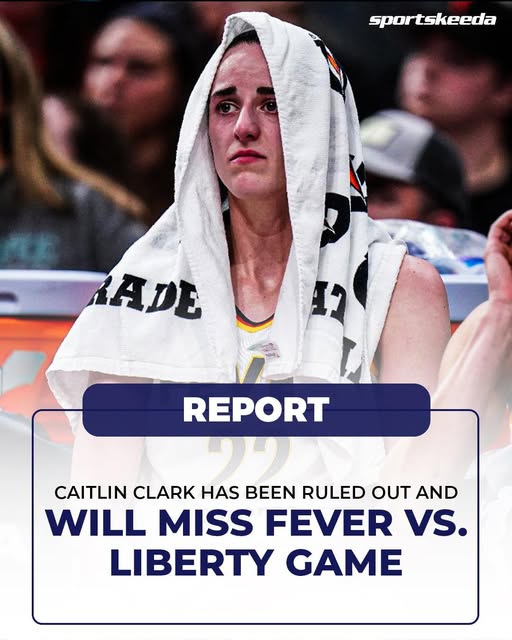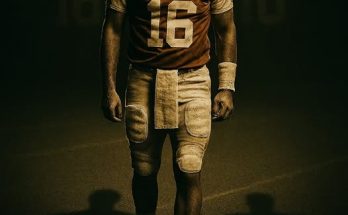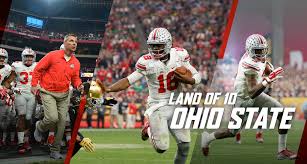Caitlin Clark, the electrifying rookie sensation who has redefined women’s basketball since her collegiate days at Iowa, has officially been ruled out due to a right groin injury. This news sent ripples through the WNBA and beyond, not only because of her impact on the Indiana Fever but because her presence on the court is a driving force for the league’s surging popularity. With Clark now expected to miss the much-anticipated matchup between the Indiana Fever and the New York Liberty, fans, analysts, and fellow athletes are all left contemplating the significance of her absence—on and off the court.
Injuries in professional sports are not new. Every athlete, regardless of their conditioning, regimen, or talent level, is vulnerable to the physical toll exacted by high-level competition. For Caitlin Clark, the right groin strain is a painful reminder of how quickly momentum can be disrupted. While the Fever have seen a spark since drafting Clark first overall, they now face the difficult task of recalibrating without their marquee playmaker—at least temporarily.
To understand the gravity of the situation, one must first recognize the mechanics and complexity of a groin injury. The groin, anatomically referred to as the adductor region, involves a group of muscles on the inner thigh responsible for pulling the legs together and stabilizing the pelvis. These muscles play a crucial role in lateral movements, sudden accelerations, quick directional changes, and jump landings—all of which are essential in basketball. Groin injuries can range from minor strains to more severe tears, with recovery times varying widely depending on the severity and treatment protocol.
Caitlin Clark’s style of play—a dynamic blend of agility, court vision, and relentless movement—puts immense strain on her lower body. From weaving through defenders to pulling up for deep three-pointers and dishing no-look assists, every move places stress on her core and leg muscles. That’s what makes a groin injury particularly debilitating for a guard like Clark. Not only does it limit mobility, but it also affects explosiveness and confidence, both of which are vital to her game.
The Fever’s coaching staff and medical team made the decision to sideline her for the upcoming game against the Liberty—a move both prudent and necessary. Short-term pain, in this case, might prevent long-term damage. While fans will certainly be disappointed by her absence, especially against a powerhouse team like the Liberty, it’s essential to prioritize long-term health over immediate entertainment. With a full career ahead of her and the burden of lifting a franchise on her shoulders, Caitlin’s well-being must come first.
This moment also presents a broader opportunity to reflect on the physical demands placed on female athletes, particularly in professional basketball. The WNBA season is compact, with many teams playing three games per week. Travel, minimal recovery time, and grueling practice schedules can exacerbate existing injuries or create new ones. Additionally, many WNBA players play overseas during the offseason to supplement their income, further limiting the window for rest and recovery. The cumulative toll can be enormous.
Clark’s injury—and the attention surrounding it—serves as a wake-up call to invest more in athlete health and recovery resources in the WNBA. While male counterparts in the NBA often benefit from cutting-edge facilities, custom recovery protocols, and vast medical teams, WNBA franchises sometimes operate with limited resources. That disparity underscores the need for structural investment if the league wishes to protect its stars and foster long-term athletic excellence.
There’s no denying that Clark’s presence has been transformative for the Indiana Fever. Since her arrival, the franchise has enjoyed increased national attention, record-breaking attendance, and a spike in merchandise sales. But her value extends beyond the court. She symbolizes the next era of women’s basketball, where talent meets charisma, and athleticism merges with cultural relevance. She’s become a beacon for young girls dreaming of basketball stardom and a reason for new audiences to tune in.
But what happens when the star is temporarily gone?
For the Fever, this means adjusting their offense. Clark is not just a high scorer but the engine of the team’s playmaking. Her ability to stretch the floor, hit deep threes, and find open teammates forces defenses to react in unconventional ways. Without her, Indiana will need other players to step up. Kelsey Mitchell, Aliyah Boston, and NaLyssa Smith now bear the responsibility of maintaining offensive production and floor balance.
Aliyah Boston, the reigning Rookie of the Year, will likely shoulder more responsibility in the paint. Without Clark’s perimeter threat, opposing defenses may collapse more easily on Boston, challenging her to find ways to adapt. Meanwhile, Kelsey Mitchell’s scoring acumen must come to the forefront. She has the experience and skill set to lead the team, but doing so without Clark means taking on more ball-handling and decision-making duties. NaLyssa Smith, known for her rebounding and mid-range shooting, will be key in maintaining pace and flow.
The coaching staff must also adjust. Head coach Christie Sides will need to retool her playbook, emphasizing team ball movement and possibly shifting to a more deliberate offensive pace. Without the breakneck transition opportunities often created by Clark, Indiana might look to slow the game down and rely more on half-court sets and interior play.
This injury also presents a critical learning moment for Clark herself. No athlete welcomes time away from the game, especially when they are in the spotlight, but this pause allows her to reflect, recover, and return stronger. Physical therapy and rehabilitation will be intensive, focusing on restoring strength, flexibility, and balance to the injured area. Just as important will be the mental aspect—staying engaged with team strategies, supporting teammates, and maintaining a competitive edge from the sidelines.
Moreover, Clark’s setback offers a powerful message to aspiring athletes about the importance of listening to your body. In the age of social media and relentless performance pressure, it’s easy to ignore signs of fatigue or discomfort. But pain is a signal—not a weakness. Proper diagnosis, timely intervention, and rehabilitation are essential parts of a sustainable athletic journey.
For fans, this is a time to demonstrate patience and understanding. The temptation to demand quick comebacks is ever-present, especially when ticket sales, TV ratings, and excitement hinge on a single player. But greatness is forged through resilience, not reckless urgency. If Clark is to enjoy a long and successful career, the road must occasionally include rest stops.
As for the WNBA, this is a pivotal moment to consider the infrastructure surrounding player care. With the league enjoying unprecedented visibility thanks to players like Clark, Angel Reese, A’ja Wilson, and others, it must capitalize on this momentum by investing in the long-term health of its stars. That means upgraded medical staff, expanded training facilities, optimized travel conditions, and realistic scheduling.
Fans and stakeholders alike must evolve their mindset from short-term gratification to long-term sustainability. The Fever vs. Liberty game might lack its brightest star, but it doesn’t have to lose its luster. This is a chance for the rest of the Indiana roster to shine, to demonstrate the depth and determination of the team. And it’s a chance for fans to appreciate the entire spectrum of talent in the league—not just the marquee names.
Caitlin Clark will return. Of that, there is little doubt. Her drive, competitive spirit, and work ethic have already defined her young career. But when she does come back, she will likely do so with a deeper understanding of what it means to be a professional athlete. Not just in terms of performance, but in managing expectations, prioritizing health, and enduring adversity.
In the broader conversation around women’s sports, her injury shines a light on both progress and the work still to be done. We have reached a point where WNBA games sell out arenas, where college stars transition into household names, and where the media landscape is actively following every development. But true progress includes ensuring that these athletes are cared for, respected, and provided with the resources necessary to thrive.
So while it is undeniably disappointing that Caitlin Clark won’t be suiting up against the New York Liberty, the bigger picture must remain in focus. Her absence, though temporary, is a reminder of the physical intensity of the game, the fragility of the human body, and the importance of comprehensive care in elite sports.
For now, all eyes will be on how the Fever navigate this moment of uncertainty. It will test their cohesion, strategy, and resilience. And while Caitlin Clark heals, she’ll undoubtedly remain a vocal leader, cheering from the bench, guiding younger players, and staying connected to the pulse of the game.
To every fan, teammate, coach, and young athlete watching, this moment isn’t just about a missed game. It’s a lesson in patience, responsibility, and perseverance. And when Clark finally returns—whether it’s in a week or a month—she will do so not just as a star, but as a symbol of what it means to fall, recover, and rise again.
Here’s wishing Caitlin Clark a speedy and complete recovery. The game will wait for her—because she is worth the wait.



